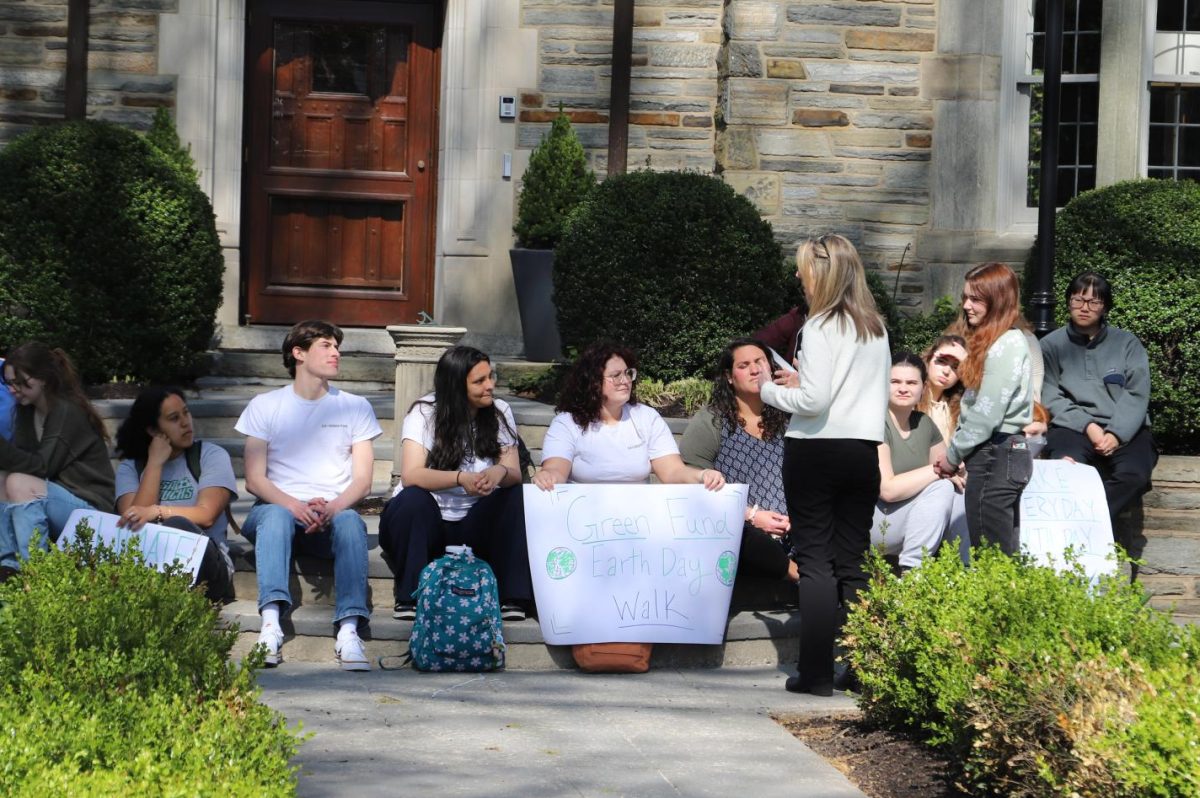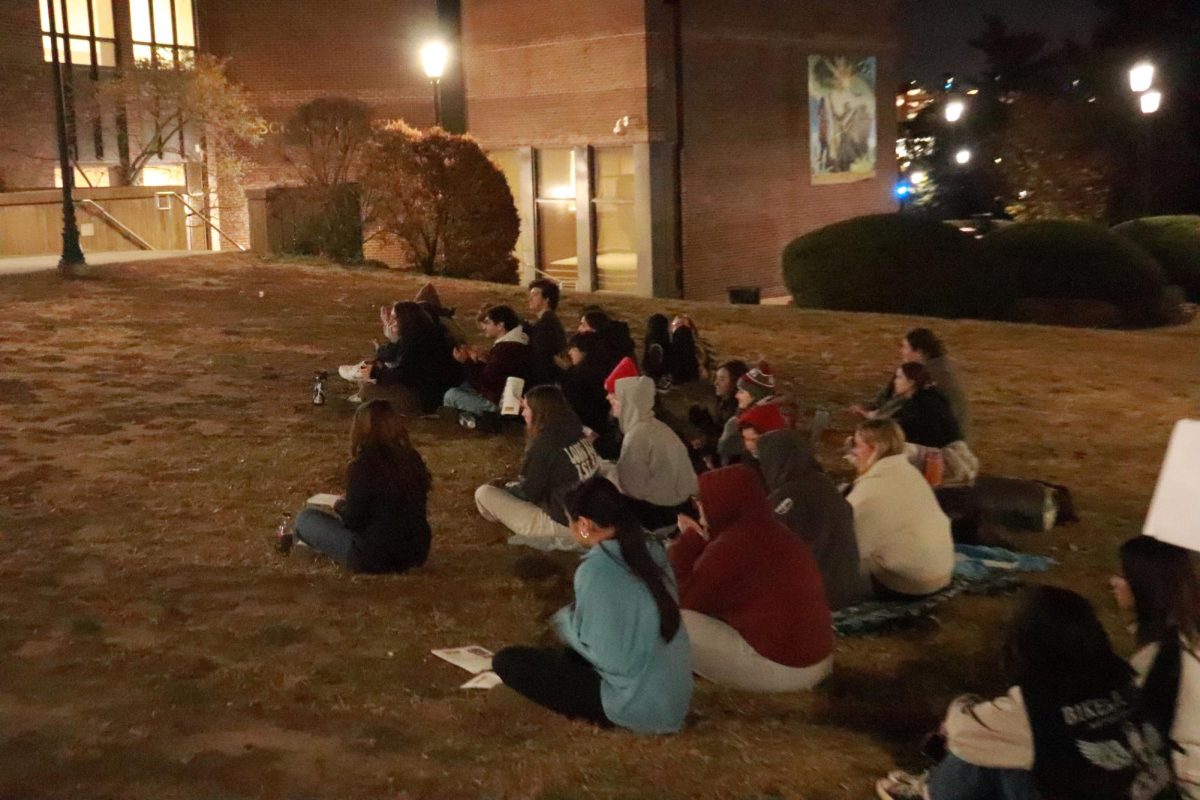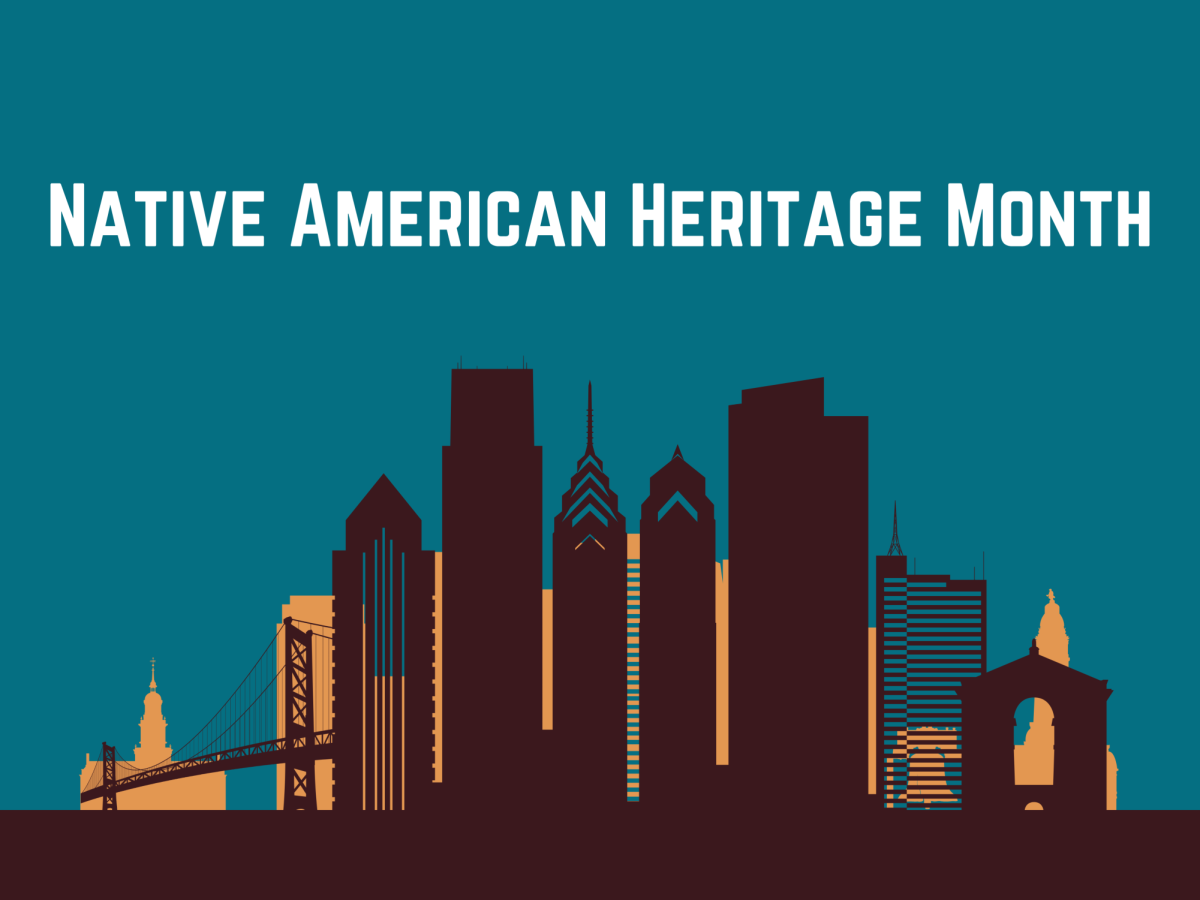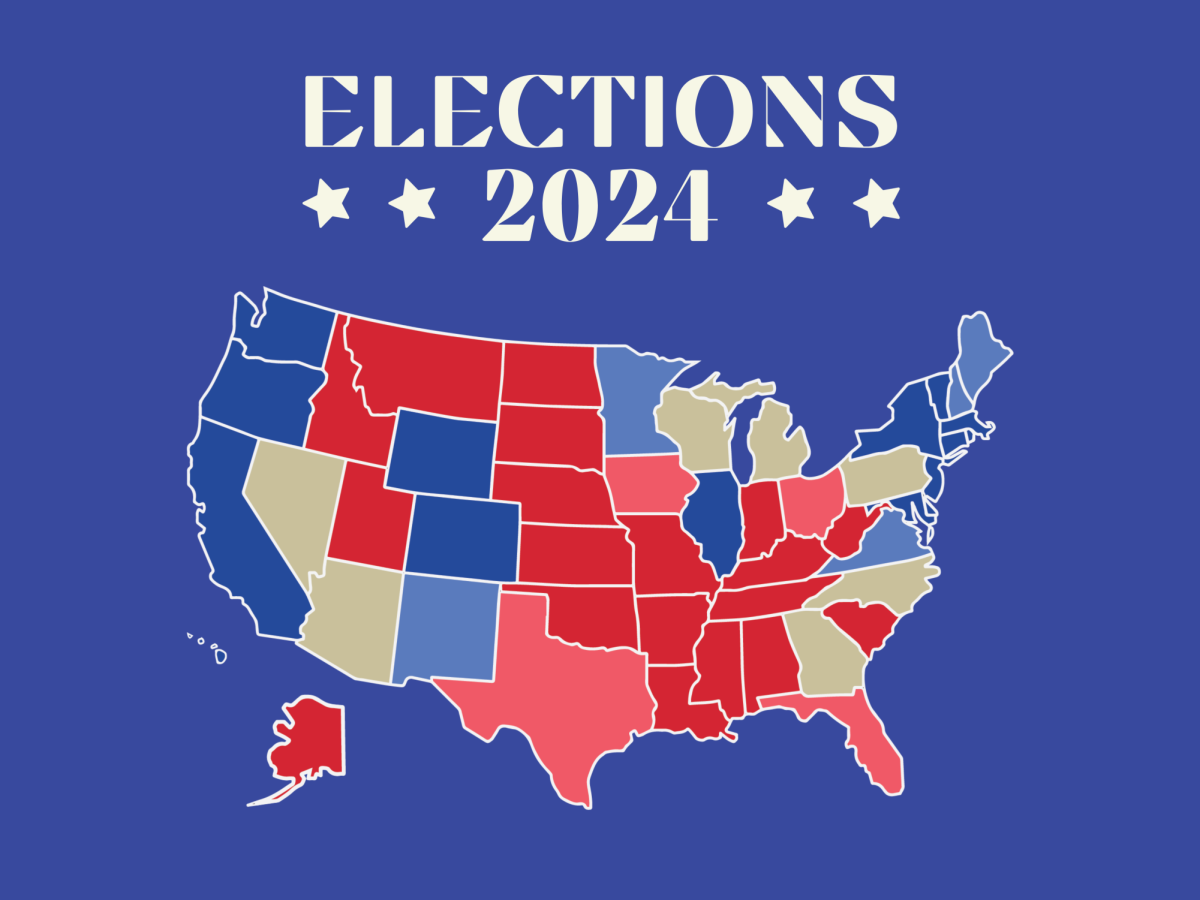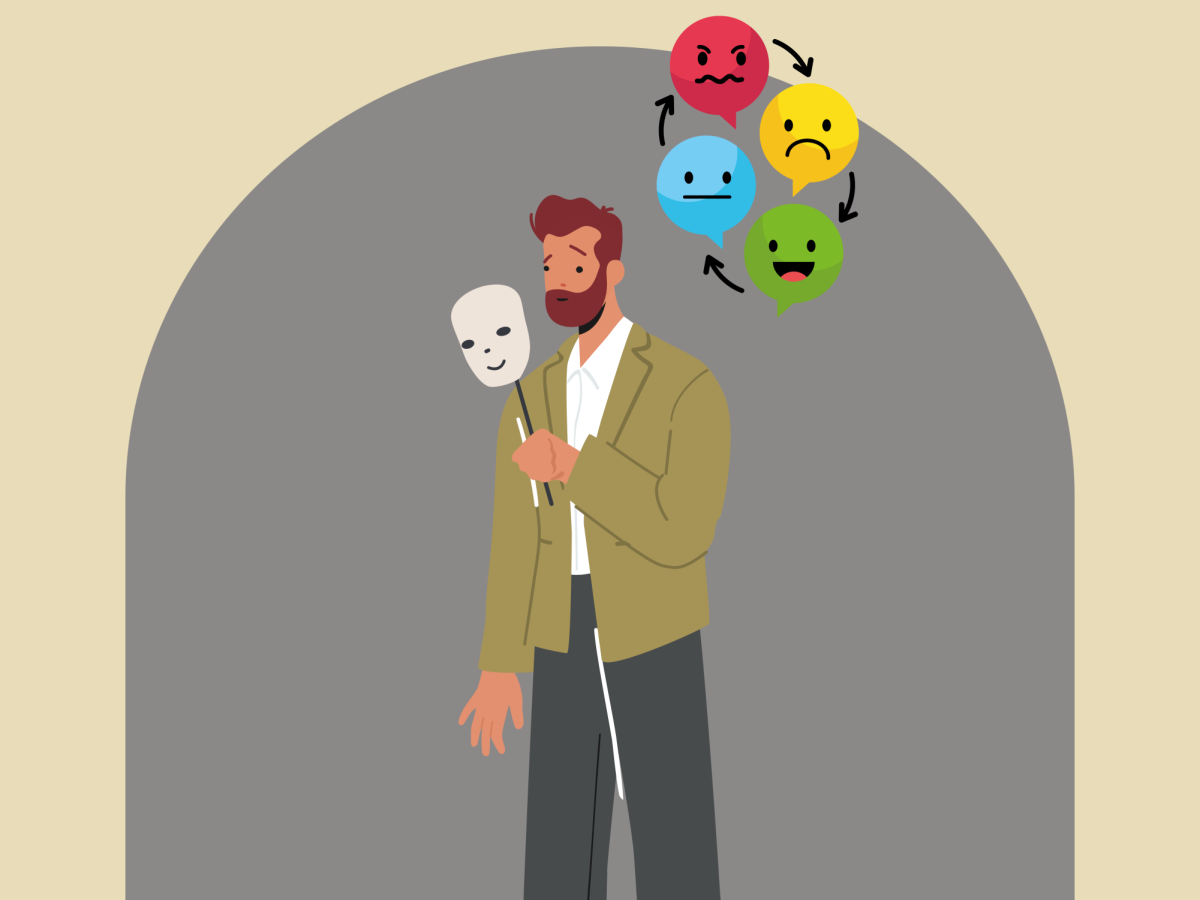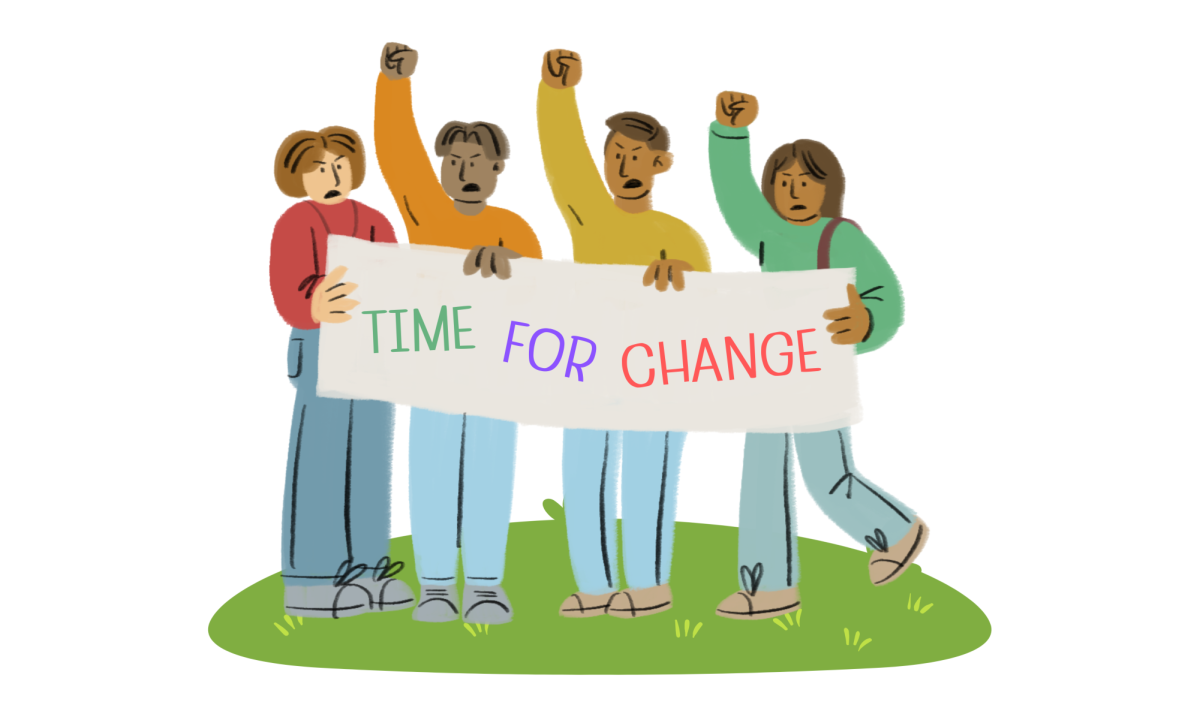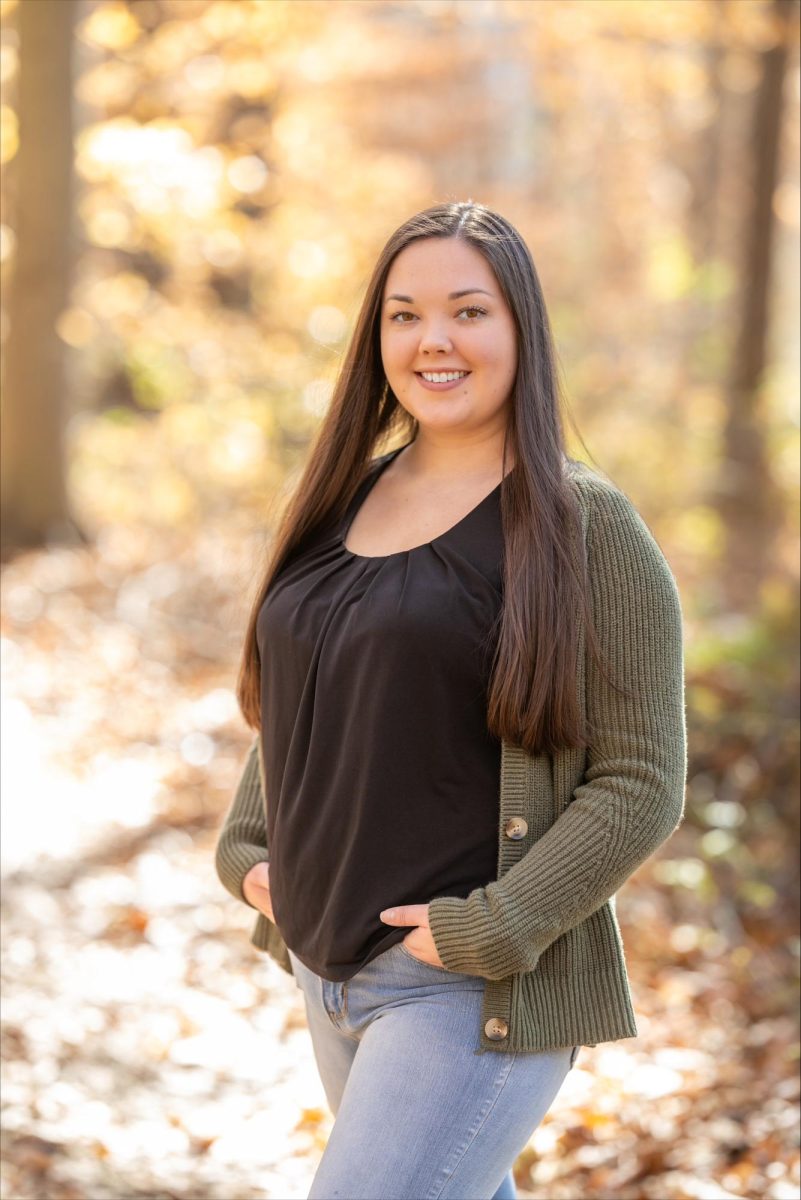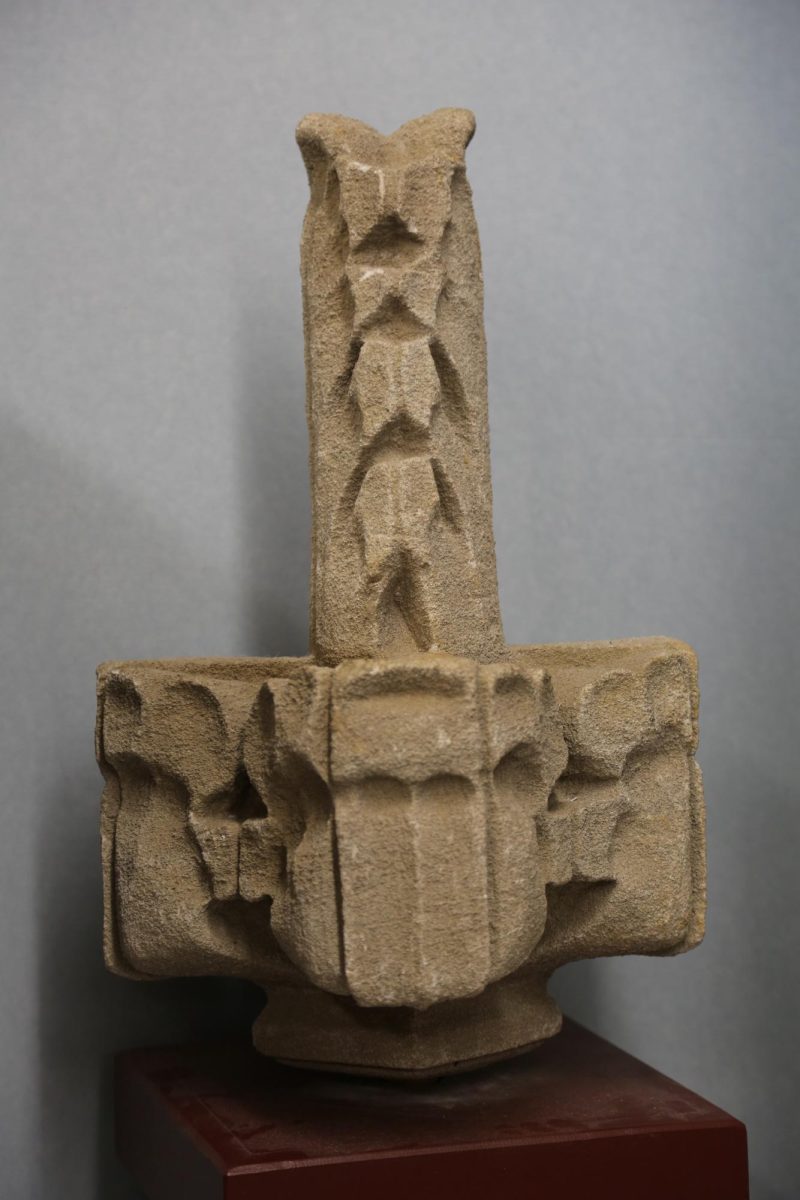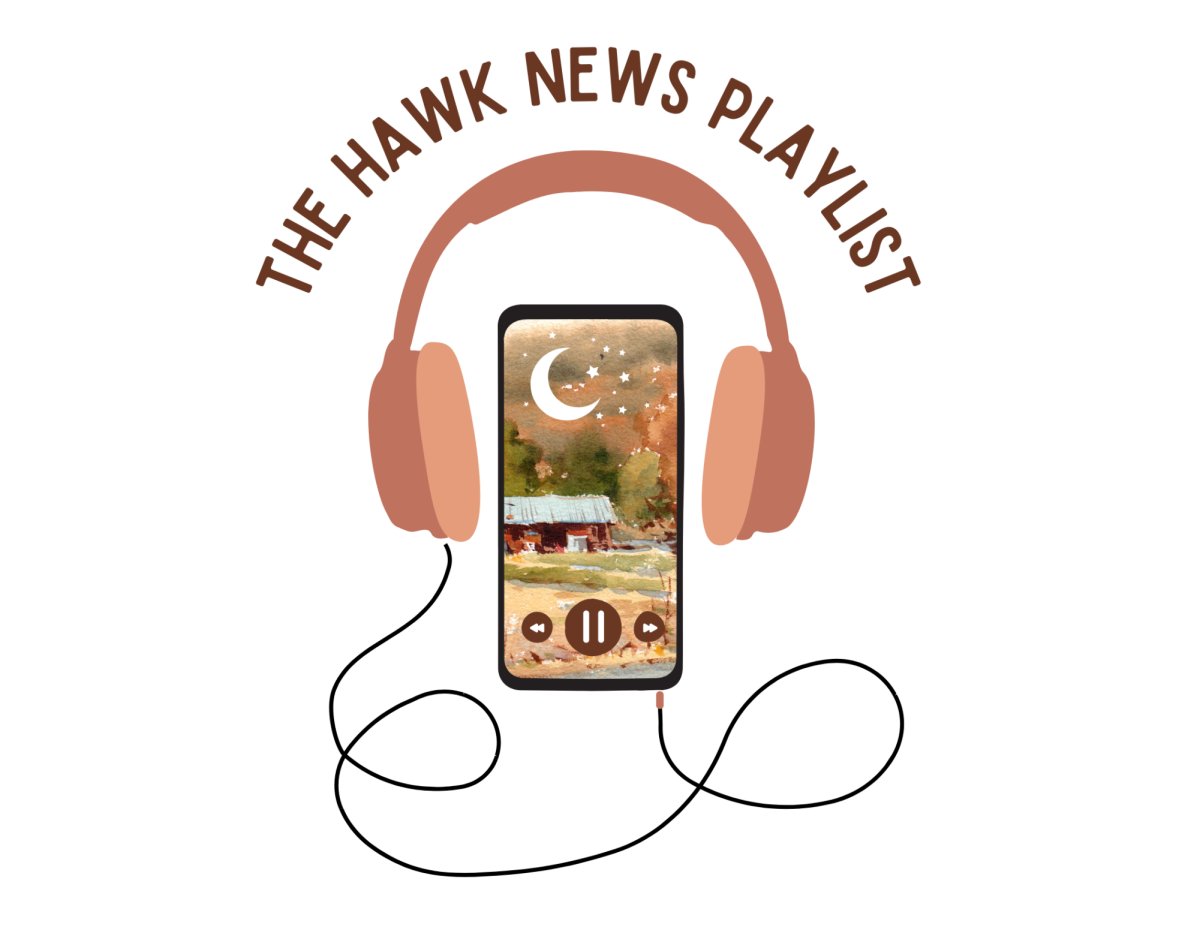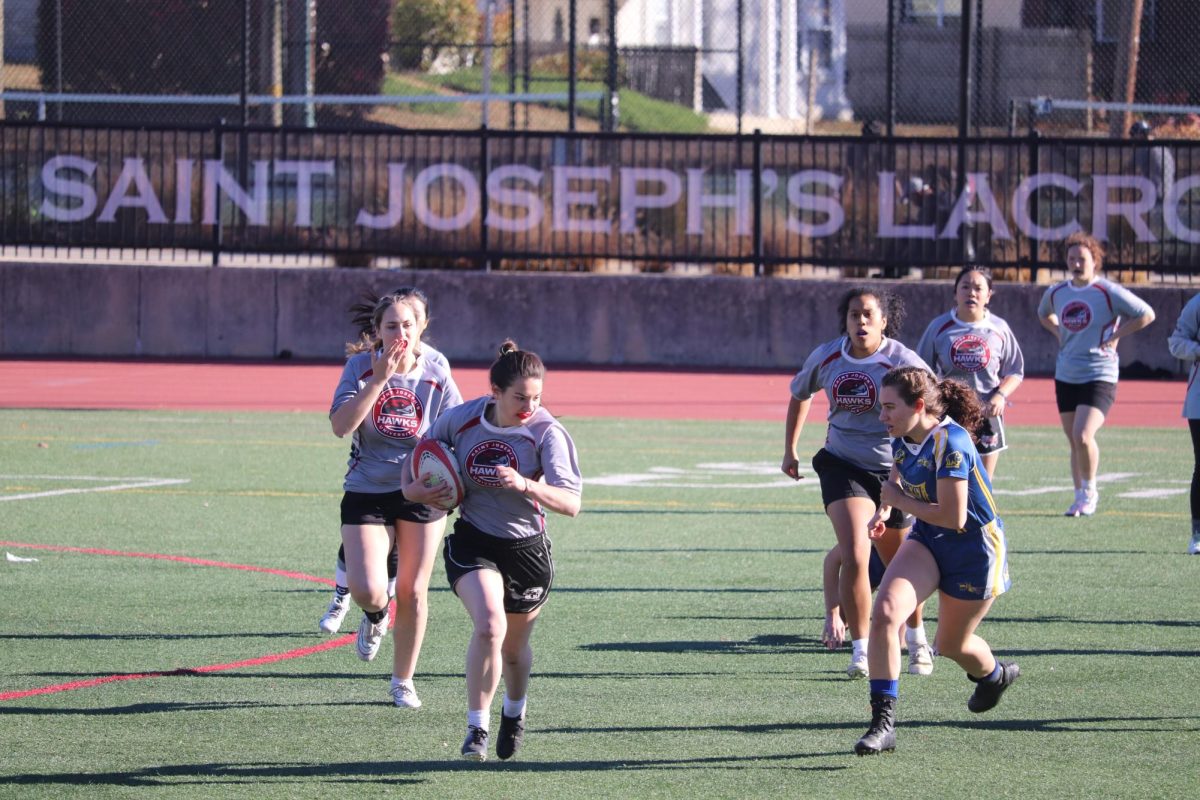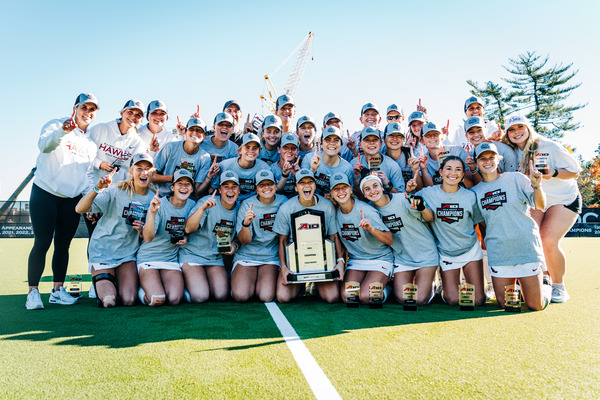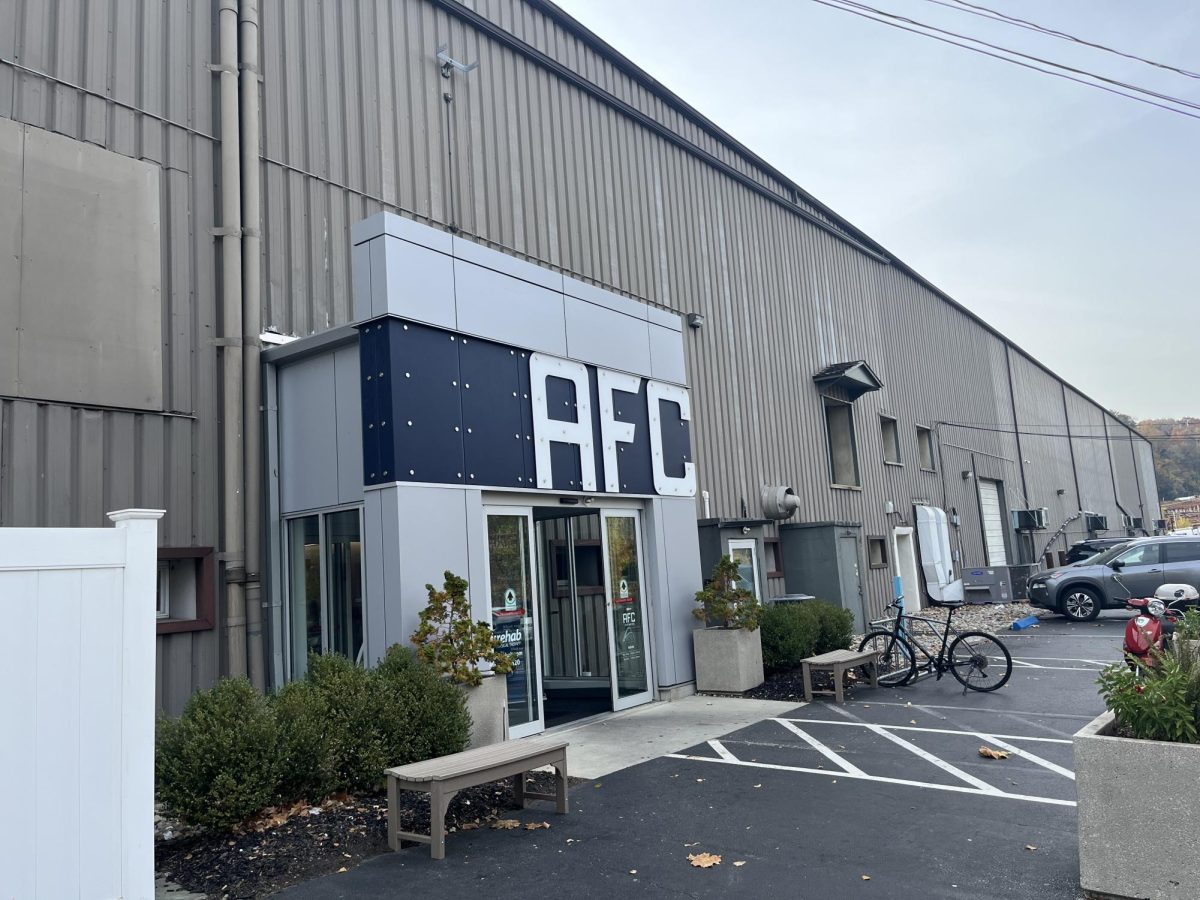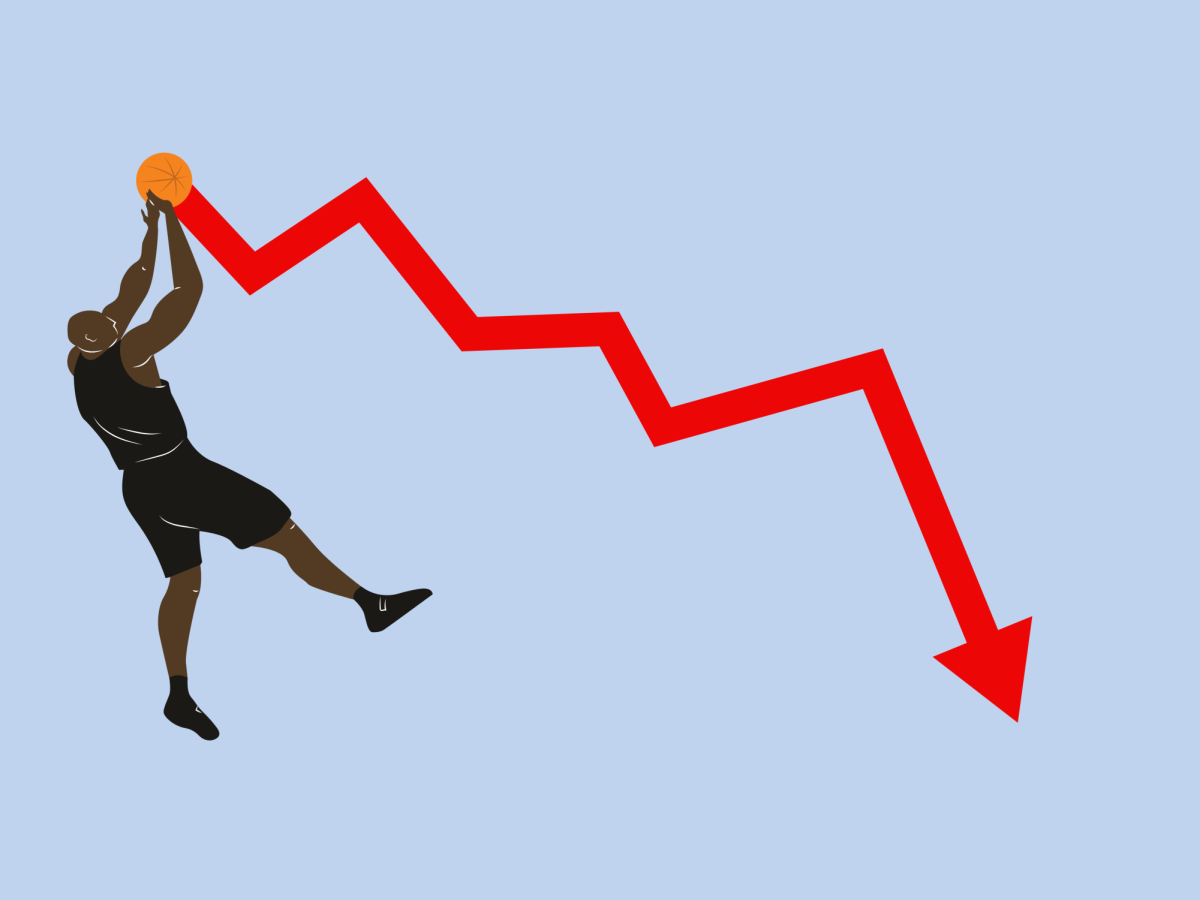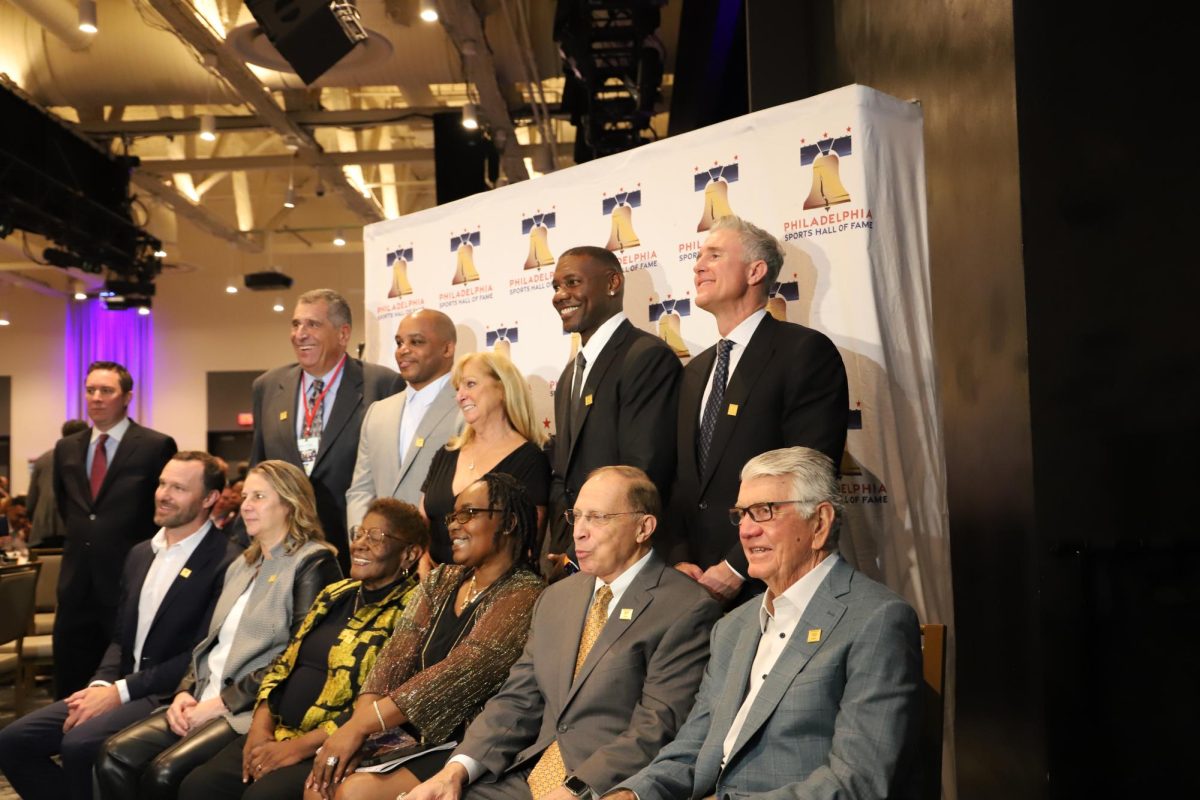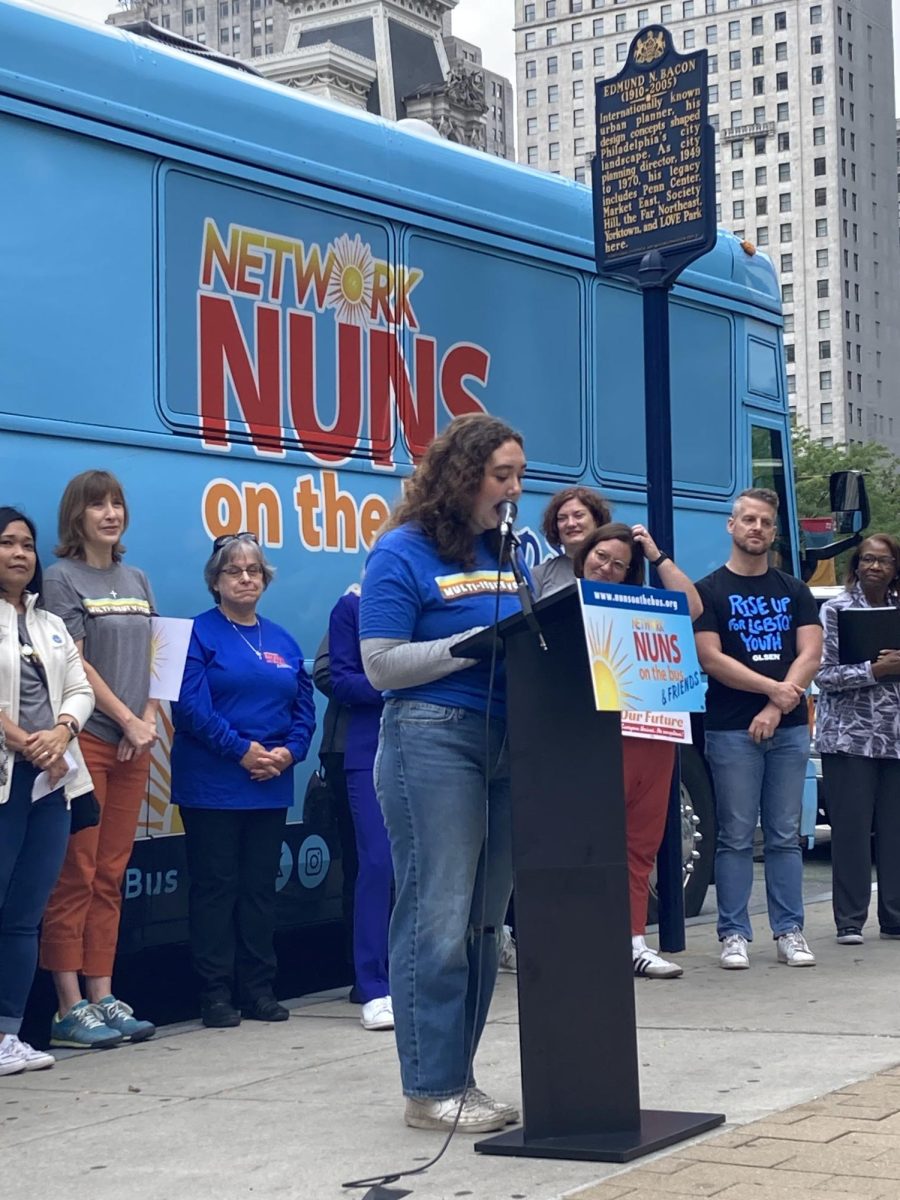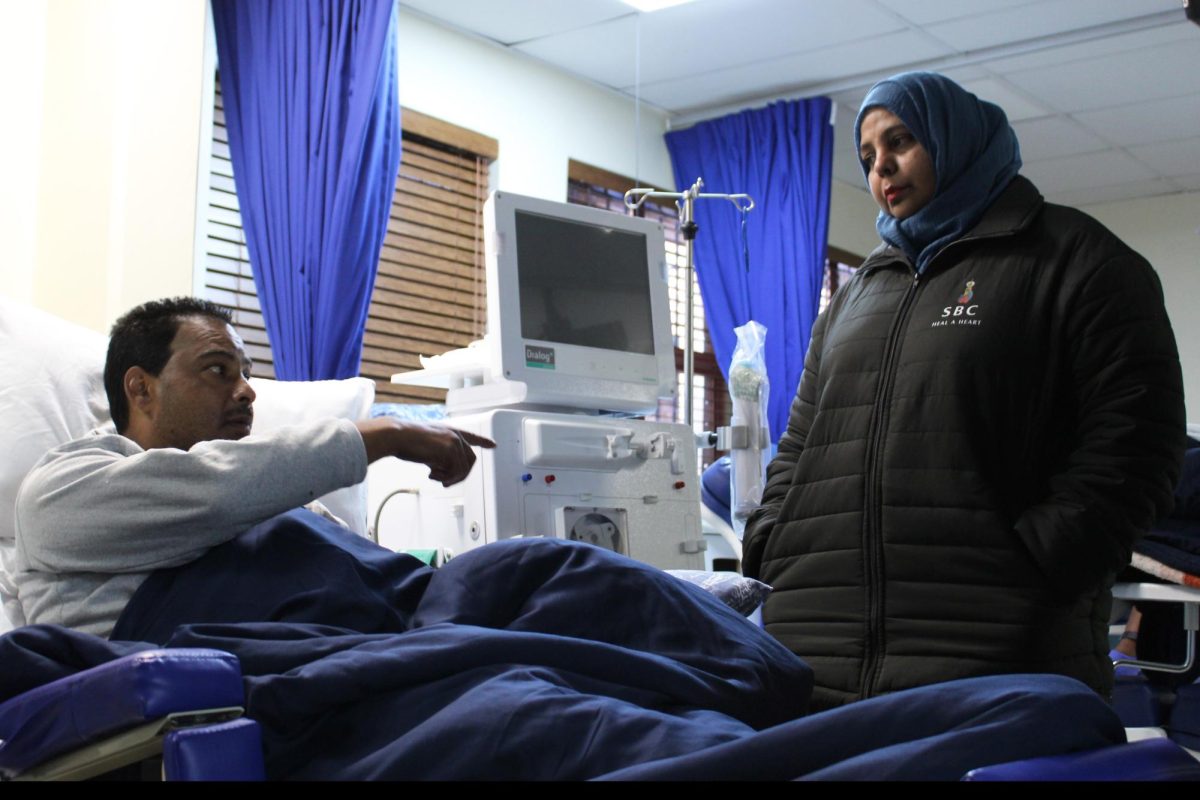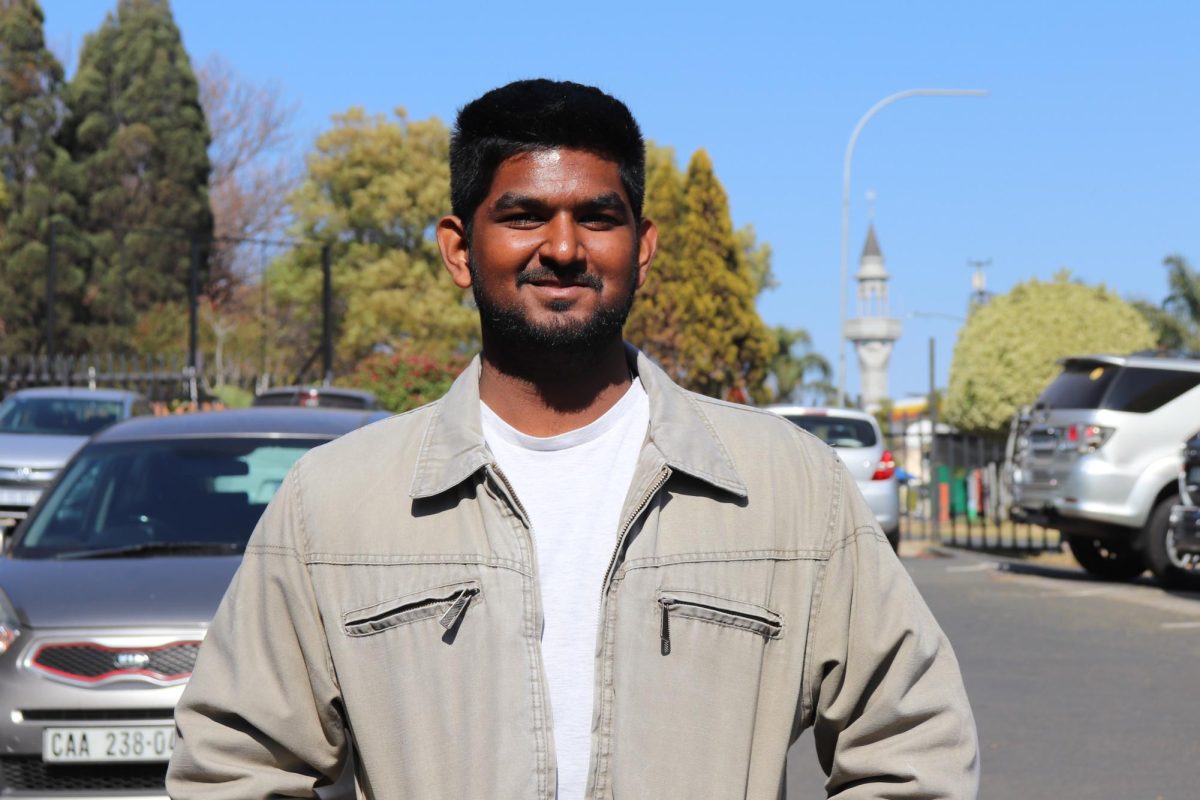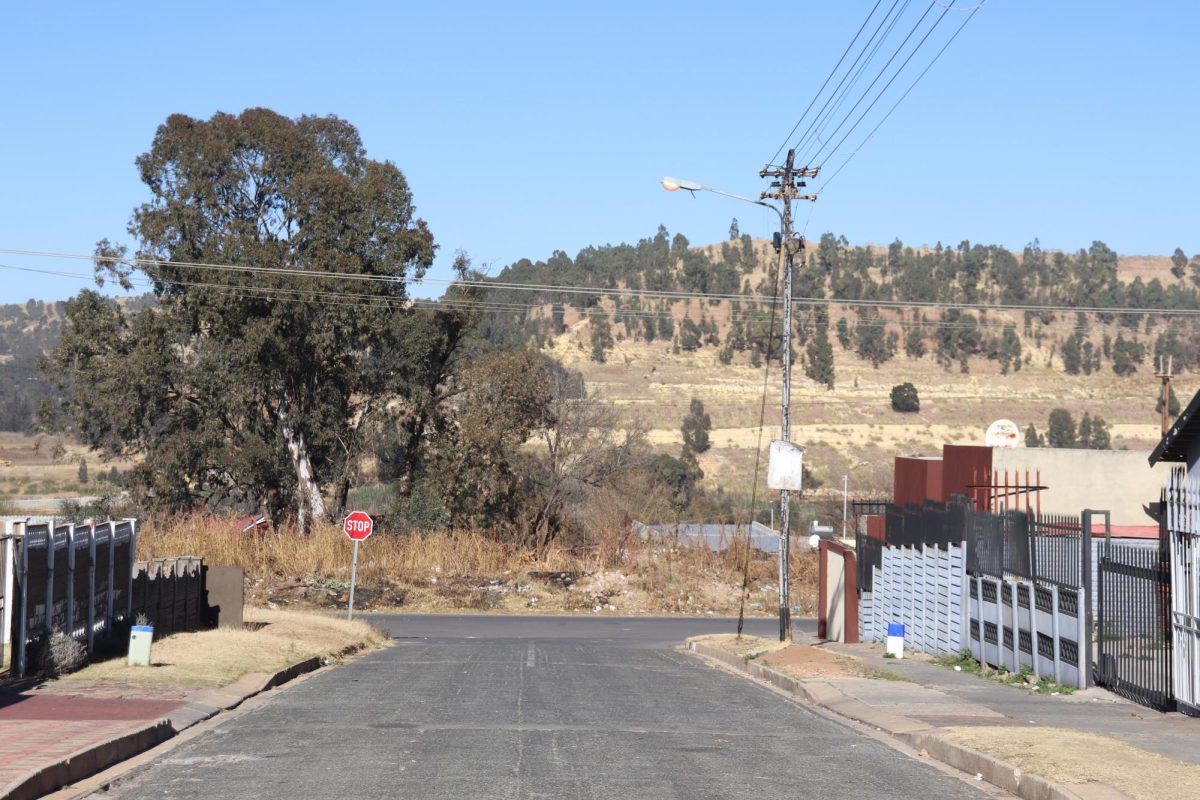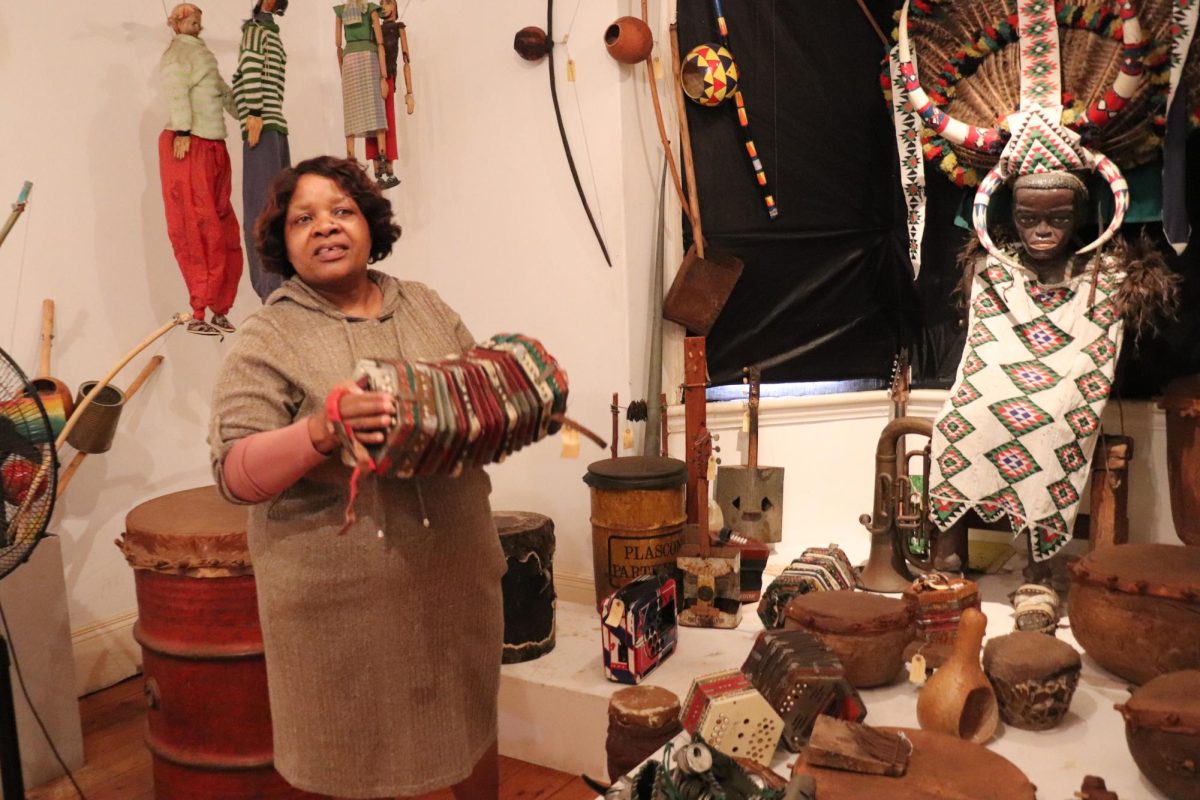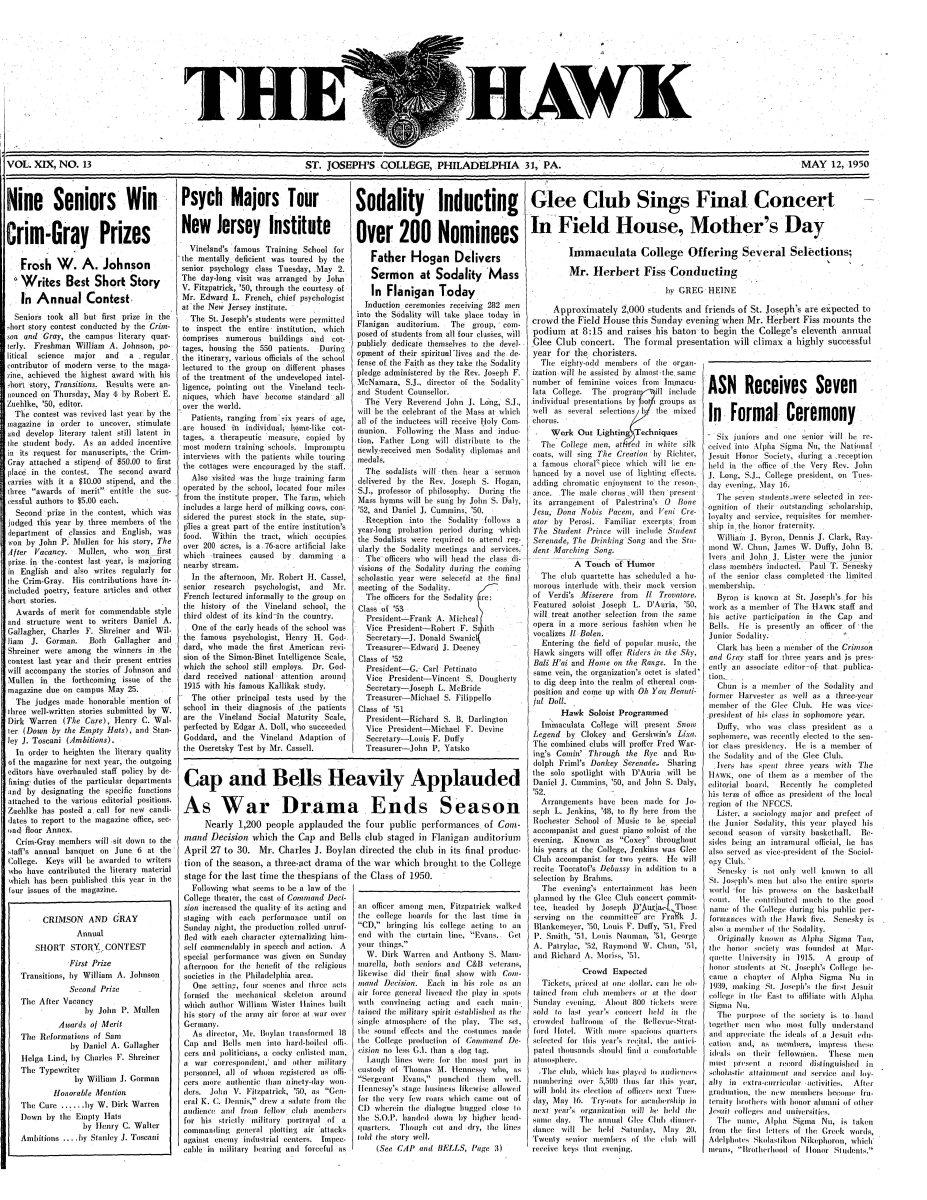Alumnus reflects on his time at St. Joe’s
September 1946 was a time of great change. World War II had ended. Peace was welcomed around the world. It was also a time of great challenge, particularly to recent high school graduates heading for college. For two such, Hugh Jones, ’50, and myself of Bala Cynwyd, the mountain did not seem all that high. “College” in our case meant wandering four blocks west on City Line Avenue. (It may be worth noting that just a few years prior, the two of us would lie down in the middle of this very same City Line because there was no automobile traffic, and we could hear the distant rumbling of Army convoys well ahead of their appearance, thus avoiding being made permanent parts of the macadam.)
However, nothing about leaving high school for college is completely simple. For one thing we were descending from the top of the academic/social world to the lowest of ranks – freshmen.
September of ‘44 was also marked by broad, unforeseen demographic changes in student bodies. Those who served in the armed forces were covered by The Government Issue Bill, dubbed the G.I. bill. In essence, books, tuition and a small additional allowance for each student were covered by the government. Bottom line? Thousands of veterans, previously not bound for a college campus were now heading for it. Traditional entrance gave way (rightly) to those whose lives were put on hold by the war.
Those of us coming directly from high school in September of 1946 were vastly outnumbered by these returning “Vets.” (Our Freshman Class saw 19 recent high schoolers engulfed in a sea of 600 veterans.) For us high schoolers, it was essentially a repeat of our senior year; for men away from the books for years, it was another thing altogether. That gap lessened over our next four years, but we still had to meld two different life experiences.
For the public high schoolers used to co-ed schooling, the absence of young women in the classroom was huge. Then there were these Jesuit priests in their long black cassocks. For some of us, the only time we saw a priest was at Sunday Mass. What was this all about?
Many of my classmates had been in combat. Even if they had not seen actual fighting, they were older. Many were married or about to be. The thought of wearing the “dink” cap freshman wore had very little or no appeal for them. Social environments were also different worlds.
Over those four years the influence of the Jesuits grew. We had some powerhouse priests in that era. Names like Dincher, Blee, Gannon, Emery, Handren and Smith are easy to remember and hard to forget. Elderly, but formidable Father Myles O’Malia thundered to one class: “Remember, Mister, when you’re parked in that car on a dark road with your girlfriend, the Blessed Mother is right there with you. Many a face, vet and high schooler alike, blanched.
Cigarette smoking and drinking were old stories to former military (“smoke ‘em if you got ‘em”). Bars, welcoming oasis from the drill field or worse carried over to their civilian life.
The changes to the campus from the late 1940s to 2017 are far too many to count. When I think back to limited space enriched by an old Army barracks which doubled as our academic space, comparing the then to the now is culture shock, pure and simple. Some feats from those earlier days of innocence could never be duplicated. The moves we made on certain professors were illegal. I can still hear Kelley, our prized long distance runner yelling “Here!” from the lawn outside the building when the roll was called. Or a friend of mine knocking on the cloakroom door in the back and in muffled voice pretending to be someone locked in, moaning “Lemme out!”
The Junior Week show that highlighted campus foibles included Bill (“Beast”) Bevlock impersonating our diminutive Dean, Father Drane. Beast shortened his stature by kneeling, enfolded in a cassock and delivered a pitch perfect vocal tour de force. Father Drane may never have forgotten that gig but he showed mercy nonetheless by giving Bevlock a pass on his third blue book exam for a course threatening his graduation. Accounting 101 stymied me for three shots as well, but mercy abounded in those days. Or else we just plain bored to death the poor faculty monitors holding our fates in their hands.
Jack Hyland of our class wrote a well-received play (“River Crossing”) that captured his wartime combat experience. But by now, most of us were not looking backward but forward to graduation and getting full time jobs.
My years at St. Joseph’s College brought me firmly into the sport of tennis. I labored as manager of the team for three years before I acquired enough skill to play in doubles matches, especially alongside John Bateman, a class behind and a player of far greater talent. It was also here where I established friendship with J. Taney Willcox who became my lifelong hero. Taney (pronounced “Tawney”) was a towering blonde athlete who captained our team and went out of his way to help others. He provided the assistance my game sorely lacked. Short years after our graduation Taney was crippled by infantile paralysis yet completed law school and built a very successful career. But that is another story for another time.
Graduation Day, 1950, at Hawk Hill beamed sunny, enriched no doubt by the smiles of our class finally ready to go out the door. The new field house and the downtown Cathedral for Mass were highlights. The Philadelphia Inquirer ran a photo of the very long line of gowned graduates wending our way toward tomorrow. I remember it clearly because a diminutive woman stood to one side anxiously searching for her eldest son. She was my proud mother. Proud as well a few years later when my younger brother, Tom F. Reilly, II, graduated. Prouder still when her two Reilly granddaughters received their diplomas with honors. Hawks one and all.
My own view is that my classmates and other graduates of Saint Joseph’s University are bound together by one chorus that proclaims year after year, The Hawk Will Never Die.
Charles Reilly graduated from Saint Joseph’s College in 1950 and then enlisted in the U.S. Armed Forces during the Korean War. He later worked in communications for “TV Guide,” a bi-weekly magazine with television listings, and eventually founded In-Person Communications, a corporate consultancy. Reilly has been published in “The Suburban and Wayne Times” and “Main Line Life.” Reilly initiated contact with The Hawk, by mailing the May 27, 1949 issue of The Hawk from almost seven decades ago.

